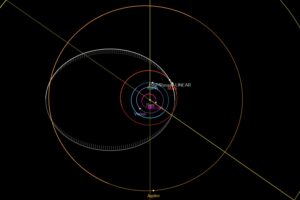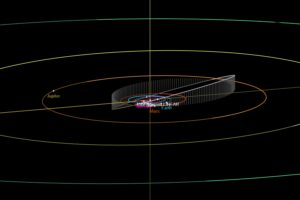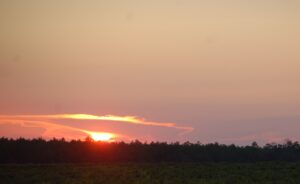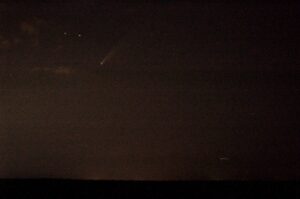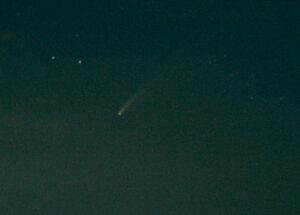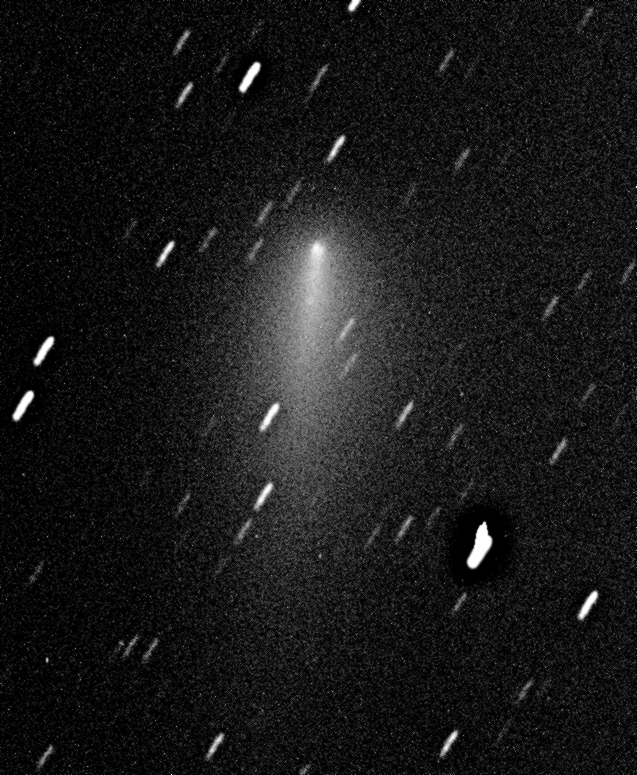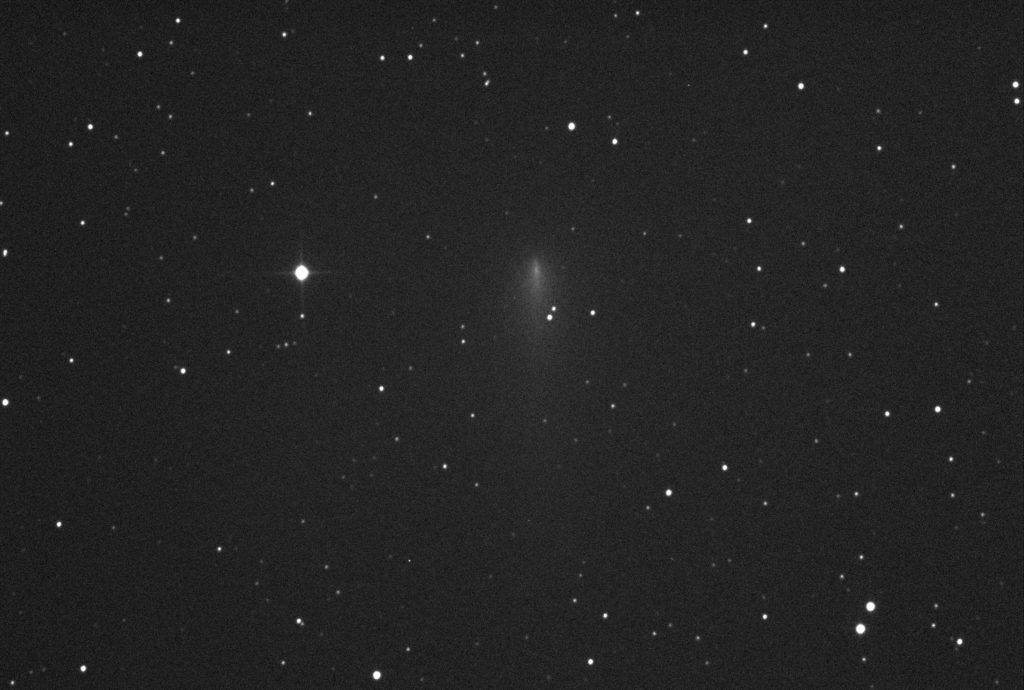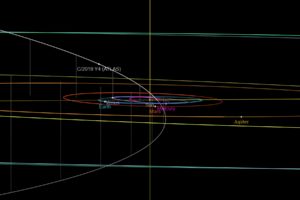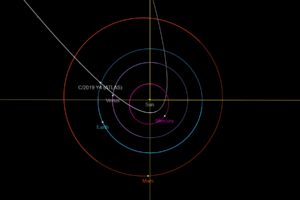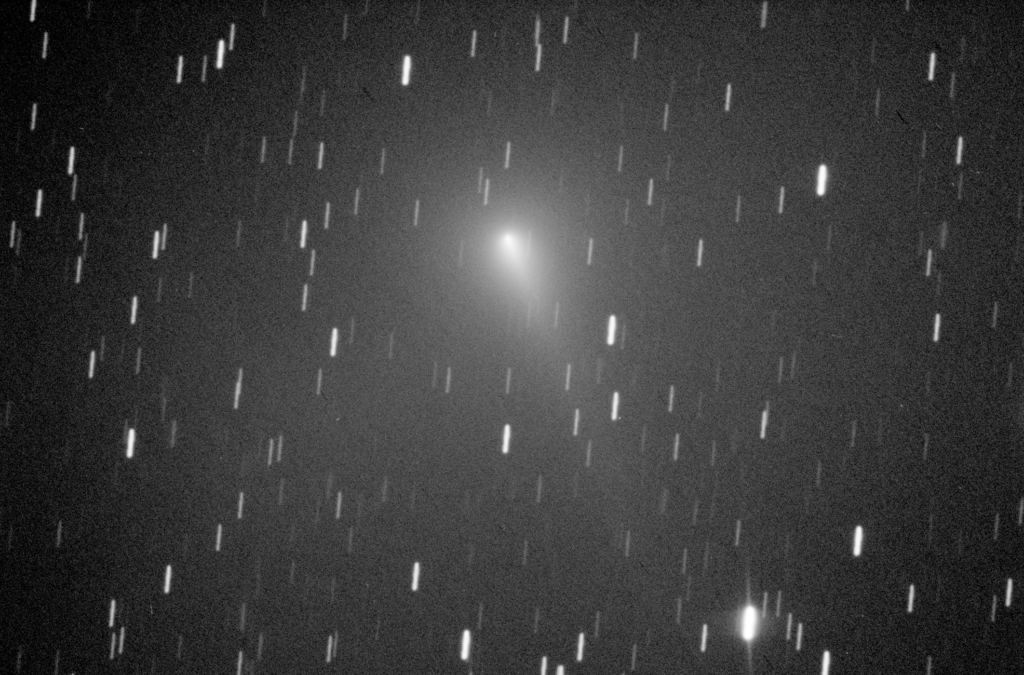The list of observable comets issued by the MPC yesterday has 953 entries. One of them is 156P/Russell-LINEAR. The comet was initially discovered by K.S. Russell in September 1986 at Siding Spring Observatory, Australia.
The following animation is made of 99 sixty second exposures. You may see a satellite pass through the field of view and there is also some low altitude haze that passed overhead.
The ‘P’ indicates the comet is in a periodic orbit. 156P takes 6.7 years to orbit the Sun and its orbit comes just inside Mars’ orbit at perihelion and just outside Jupiter’s at aphelion. Right now, the comet is above the ecliptic and heading back out into the solar system after close approach on the 17th of November last year. Right now it is visible in the constellation Triangulum.
I measured the magnitude of the nucleus at 15.0 so it will take a fairly large telescope to view visually but would be visible photographically in a small scope.
